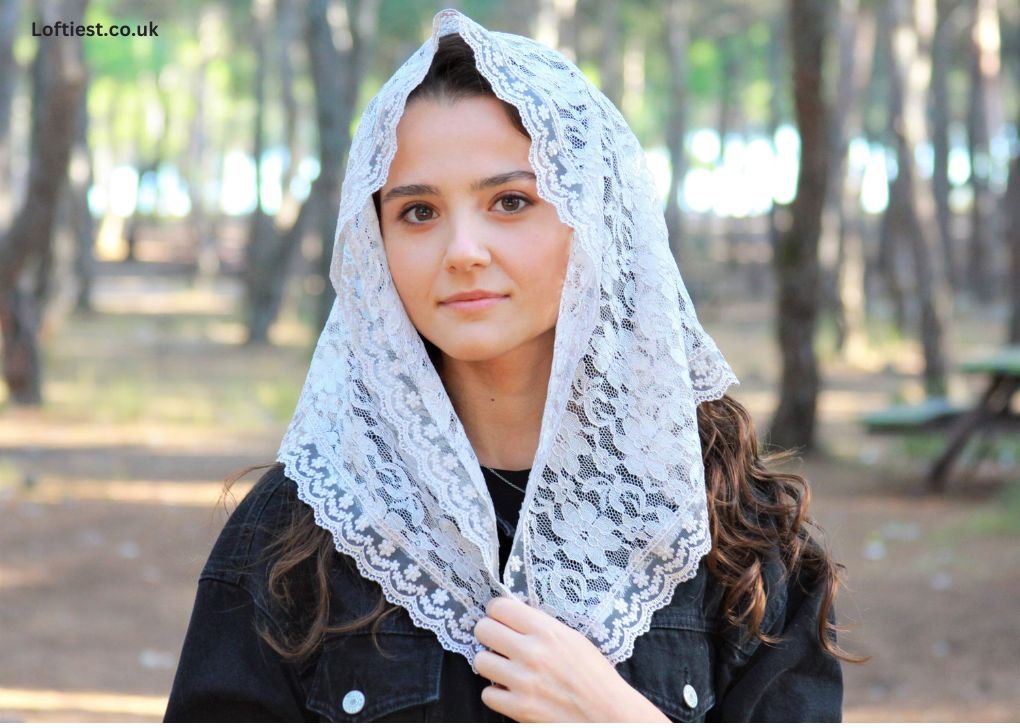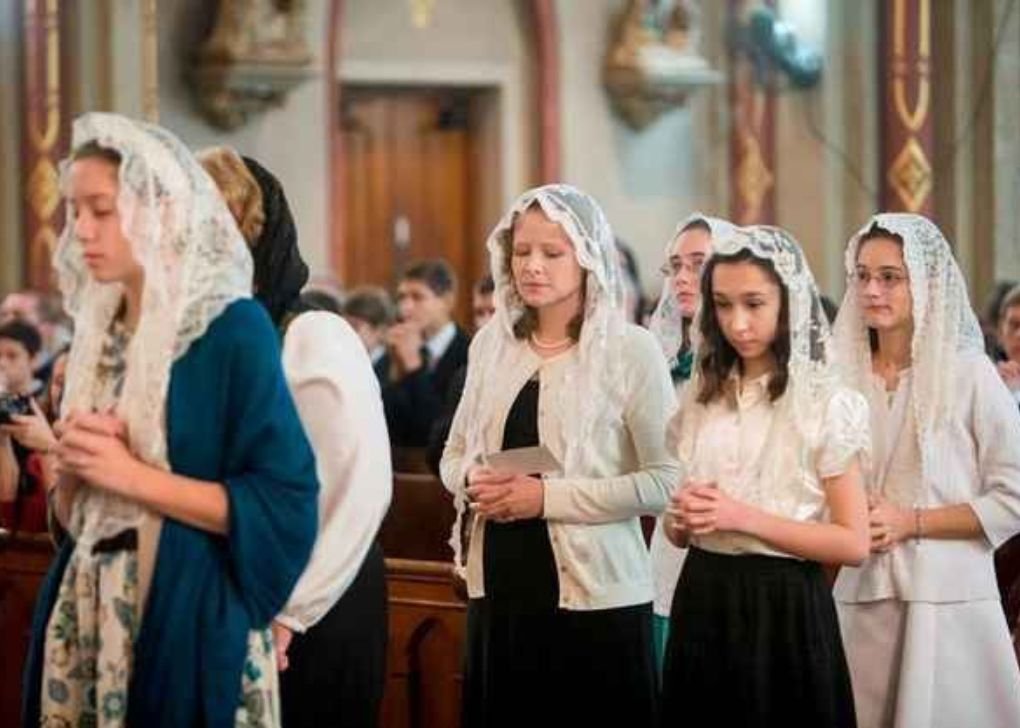Have you ever wondered why do ladies wear veils to church? The practice of wearing a veil or head covering during religious services has been a longstanding tradition in many cultures and denominations. While the practice has evolved over time, the veil continues to hold significance and symbolism for those who choose to don it during worship. In this blog post, we will delve into the historical origins, religious significance, and personal reasons behind the tradition of veiling in church settings.
Historical Origins of the Veiling Tradition
The tradition of women veiling in church settings can be traced to ancient civilizations where head coverings were symbols of modesty and social status. Within the early Christian community, this custom was adopted as a mark of respect and humility in the presence of the divine. Early church teachings and scriptures encouraged women to cover their heads during worship as a physical manifestation of their piety and to distinguish the sacredness of church ceremonies from everyday life.
This practice was further reinforced by church authorities who saw it as an essential aspect of maintaining decorum and reverence within the holy space. Over centuries, the significance and interpretations of the veil have varied, reflecting broader changes in societal attitudes towards women, modesty, and religious observance.
Also Read: Why Do Women Wear Hats in Church?
Religious Significance and Symbolism
For numerous women, the act of veiling during religious ceremonies transcends simple tradition and enters the realm of profound spiritual engagement. It serves as an emblem of humility and submission before God, a physical manifestation of their reverence and acknowledgment of the divine authority.
This gesture of covering one’s head is not merely about following a ritual; it’s a personal testament to faith, often inspired by the virtues of the Virgin Mary, who is revered as a paragon of purity and devotion across many Christian denominations.
The veil symbolizes a direct link to this legacy of female sanctity and piety, providing wearers with a sense of connection to a deeper, historical lineage of faith. Additionally, the act of veiling can be interpreted as a visible reminder of the sacredness of the worship space and the solemnity of the liturgical rites, underscoring the distinctness of the time spent in prayer and communion with God.
Veiling Across Different Cultures and Denominations
The practice of veiling extends beyond Catholic and Orthodox Christian traditions, highlighting its global and interfaith dimensions. In Islamic cultures, women often wear headscarves or veils known as hijabs, which serve as an expression of modesty and a commitment to faith.
This act of covering is deeply rooted in religious teachings and is a ubiquitous sight in mosques and during prayer. In contrast, Jewish traditions might see married women wearing a tichel, scarf, or hat, reflecting adherence to modesty principles within their faith communities.
These practices underscore the veil’s adaptability and significance across different religious contexts, illustrating a shared emphasis on modesty, piety, and devotion. While the specific styles and understandings of veiling may differ, the underlying intentions resonate across cultures, serving as a bridge that connects women of diverse faiths through a common practice of reverence and respect in their spiritual expressions.
Personal Reasons and Modern Interpretations
The decision to don a veil in church has taken on diverse and deeply personal dimensions in contemporary times. For many women, the act of veiling is more than adherence to tradition; it’s a deliberate choice reflecting a unique spiritual journey and personal conviction. Some find in the veil a heightened sense of privacy and focus during worship, a physical barrier that helps to shut out the external world and center the mind on prayer and contemplation.
Others may view it as an intimate expression of identity and faith, a tangible connection to a community of believers that transcends time and geography. Additionally, the aesthetic aspect of veiling cannot be overlooked, with many embracing the beauty and artistry of the various styles of head coverings as a form of self-expression within the parameters of their faith.
This shift towards a more individualized practice underscores a broader trend within religious observance: the search for meaningful ways to engage with one’s faith that resonate on a personal level, while still honoring the communal and sacred essence of worship.
Also Read: Iglesia Cristiana Cerca De Mi
The Veil in Contemporary Church Practices
Today, the prevalence of veiling within church practices varies widely across different Christian denominations. Some communities have seen a decline in this tradition, attributing the shift to a growing emphasis on gender equality and the autonomy of personal faith expression. Among these groups, the choice to veil or not is left to the individual, reflecting a broader perspective that values personal conviction over adherence to uniform customs.
Conversely, in churches where veiling is encouraged, it remains a meaningful expression of faith and modesty. These variations in practice highlight an ongoing conversation within religious communities about the role of traditional customs in modern worship. Despite these differences, the decision to wear a veil in church continues to be a deeply personal one, with each woman determining how best to express her faith and reverence during worship.
People Are Also Interested In:
What is the Reason for Veiling?
A veil is an external symbol of a woman’s beauty, given to her by Beauty Itself. It also conveys her special bond with Christ and her spouse, which is profoundly dignified, honorable, and really feminine.
What is a Catholic Head Covering Called?
Women cover their heads with the mantilla on important occasions and during church services as a sign of their Christian faith. A toquilla is a little form of the mantilla.
Also Read: Iglesia De Cristo Misionera Mahanaim Church
What does Wearing a Veil Symbolize?
“In religious events, veils were traditionally associated with humility and purity; however, the connotation has since changed. Veils are now regarded as a contemporary accessory that may assist reflect each bride’s unique personality and sense of style.”
What does Christianity say about Veiling?
God’s will for the man is different from His will for the woman. She must cover her head while she prays or uses the languages to communicate. She shames her head (guy) if she doesn’t. This implies that when she prays or prophesies, she must cover her head to demonstrate her submission to God’s arrangement of headship.
What the Bible Says about Covering Head?
If a woman does not cover her head, she ought to have her hair chopped off; conversely, if a woman’s hair cut or shaved off is a source of shame, she ought to cover her head. Since a man is God’s image and glory, he should not hide his head; yet, a woman is man’s glory.
What is the Purpose of a Veil in Church?
It serves as a reminder to the wearer and others of the appropriate attitude of humility before God. It is a symbol of humility for certain people. It can also be seen as a symbolizing the marriage of Christ and the Church. A head covering is also customary in several religious traditions for prayer.

